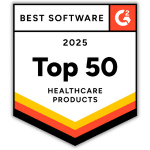What is OSHA Healthcare Compliance?
Healthcare providers and facilities must comply with the regulations issued under the Occupational Safety and Health Act (OSHA). These OSHA healthcare regulations cover various workplace safety hazards, and require employers to take specific actions to minimize those hazards. OSHA healthcare compliance consists of healthcare facilities and employers’ becoming familiar with the regulations, and then training employees on the regulations, so that the whole facility can maintain a safe environment for employees and patients.
What Are Important OSHA Healthcare Compliance Areas?
Patients who visit medical offices are concerned about whether the medical office has taken precautions to prevent exposure to germs, bacteria, and viruses. Patients also may be concerned that healthcare employees are not wearing adequate personal protective equipment to protect the employees and their patients from airborne, bloodborne, and other pathogens. Employees are concerned that patients who seek treatment for wounds or other injuries may transmit harmful bacteria or viruses.
One of the main areas of OSHA healthcare compliance is compliance with OSHA’s bloodborne pathogens standard. OSHA has found that healthcare employees are at risk of developing (and therefore transmitting) certain pathogens through blood. These include hepatitis B, hepatitis C, and HIV. For a bloodborne pathogen to be transmitted, the bodily fluids of an infected person must enter into the bloodstream of another person. The most common cause of transmission in the workplace is when an infected person’s blood enters another person’s bloodstream through an open wound.
A number of bodily fluids other than blood may contain bloodborne pathogens, especially if they are visibly contaminated with blood. Those sources include:
- Cerebrospinal fluid in the brain
- Synovial fluid in the joints
- Pleural fluid in the lungs
- Amniotic fluid in and around the uterus
- Pericardial fluid around the heart
- Peritoneal fluid in the abdomen
To reduce the risk of this occurrence, OSHA healthcare compliance requires employers to follow a series of precautions. OSHA healthcare compliance includes:
- Developing an exposure control plan, which is a written plan to eliminate or minimize occupational exposures. To ensure OSHA healthcare compliance, employers must prepare an exposure determination that contains a list of job classifications where there is a risk of exposure to bloodborne pathogens. The plan must be updated at least annually to reflect changes in tasks, procedures, and positions that affect occupational exposure, and also technological changes that eliminate or reduce occupational exposure.
- Implementing universal precautions. Under this OSHA healthcare compliance measure, workers must treat all human blood and other potentially infectious material (OPIM) as if it were an infectious bloodborne pathogen. This means that, under certain circumstances, where the presence of bloodborne pathogens cannot be confirmed or denied, workers must take the safety measures they are required to take when it is known that a bloodborne pathogen is present.
- Identifying and using engineering controls. OSHA healthcare compliance engineering controls are devices that isolate or remove a bloodborne pathogen from the workplace. Examples of OSHA healthcare compliance engineering controls include use of sharps disposal containers, self-sheathing needles, and sharps with built-in sharps injury protection.
- Identifying and ensuring the use of work practice controls. OSHA healthcare compliance work practice controls are practices that reduce the risk of exposure by changing the way a task is performed. Work practice controls include appropriate practices for handling and disposing of contaminated sharps, handling specimens, handling laundry, and cleaning contaminated surfaces and items.
- Providing personal protective equipment to workers. Under this OSHA healthcare compliance requirement, healthcare providers must provide personal protective equipment (PPE), such as gloves, gowns, eye protection, and masks, to reduce the risk of employee exposure to bloodborne pathogens. Employers must provide this equipment free of charge, and as needed. Provision, repair, and maintenance must be at no cost to employees.
- Making available hepatitis B vaccinations to all workers who are at risk of exposure to bloodborne pathogens. Under this OSHA healthcare compliance measure, the vaccination must be offered after the worker has received required bloodborne pathogens hazard and exposure control training, and within 10 days of initial assignment to a job with occupational exposure.
- Making available post-exposure evaluation and follow-up to any occupationally exposed worker who experiences an exposure incident. An exposure incident is a specific eye, mouth, other mucous membrane, non-intact skin, or parenteral contact with blood or OPIM. This evaluation and follow-up must be at no cost to the worker and includes documenting the route(s) of exposure and the circumstances.







